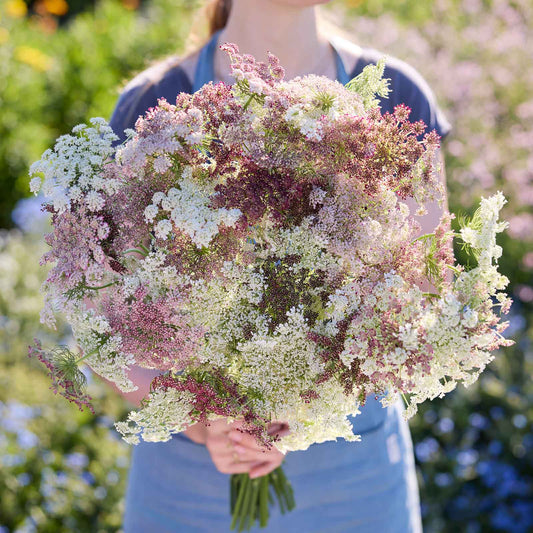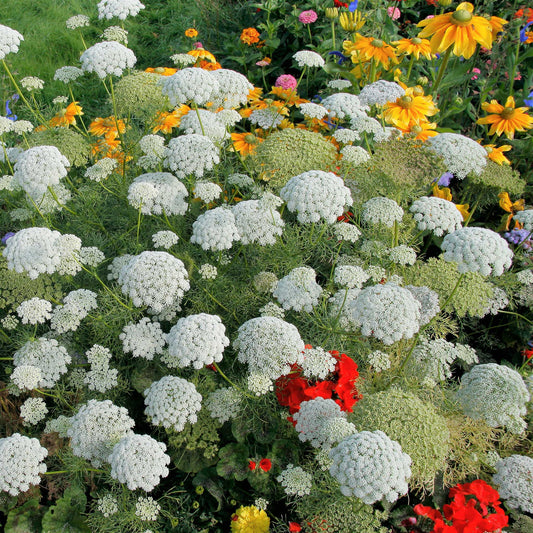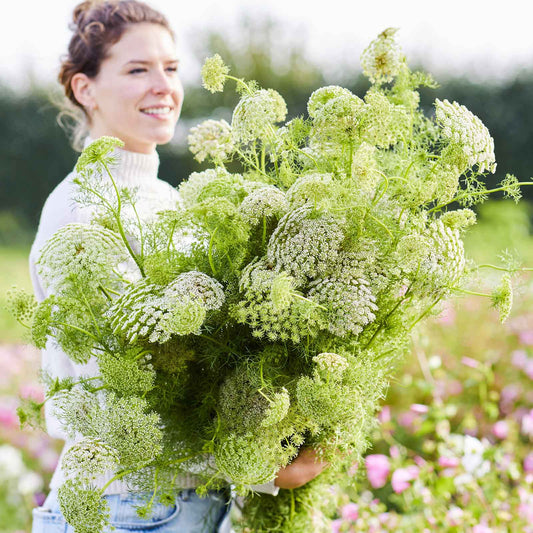-
main-collection-product-grid

Queen Anne's Lace Seeds - Chocolate Lace Flower
A fast-growing, updated Victorian favoriteQueen Anne's Lace Seeds - Chocolate Lace Flower
A fast-growing, updated Victorian favoriteRegular price As Low As $5.49Regular priceUnit price per -
main-collection-product-grid

Bishop's Flower Seeds
Versatile native wildflower doubles as bouquet filler or pollinator attractorBishop's Flower Seeds
Versatile native wildflower doubles as bouquet filler or pollinator attractorRegular price As Low As $4.99Regular priceUnit price per -
main-collection-product-grid

Bishop's Flower Seeds - Green Mist
Blooms colored from green to cream, complementing any garden or vase color schemeBishop's Flower Seeds - Green Mist
Blooms colored from green to cream, complementing any garden or vase color schemeRegular price As Low As $4.99Regular priceUnit price per
Why Bishop's flower belongs in your cut flower garden
- 3 Bishop's flower seed varieties
- Lacy, delicate bouquet fillers
- Attracts pollinators
- Extremely easy to grow
Combining aesthetic appeal and practical benefits with Bishop’s Flower
Bishop's flower, scientifically known as Ammi majus, is a captivating annual herb. Recognized for its delicate and lacy white flowers, Bishop's flower is often confused with Queen Anne's lace, though they are two different species within the same family. The plant's aesthetic charm extends to its use in floral arrangements, particularly in wildflower-style bouquets, where its intricate flowers contribute an elegant touch. Beyond its ornamental value, Bishop's flower attracts beneficial insects such as ladybugs and predatory beetles, making it a practical choice for natural pest control in gardens. Additionally, the plant's adaptability to various soil types, self-seeding nature, and propensity to attract butterflies further enhance its desirability for garden enthusiasts. While not as widely recognized for culinary or medicinal uses, Bishop's flower has historical applications in traditional medicine in some cultures, and its seeds are occasionally used as a spice. For both novice and avid gardeners alike, Bishop's flower presents a versatile and visually appealing addition to gardens, combining aesthetic appeal with practical benefits.
Harvesting Bishop’s Flower
Bishop's Flower is primarily grown for its attractive flowers that hold up remarkably well in a vase. Harvest the blooms in any stage you see beauty, usually but not limited to when they are fully open but before they start to fade. Cut the stems with sharp scissors or pruners just above a leaf node or bud to encourage further flower production. Arrange cut stems loosely in a vase and allow them to fall naturally into place. Shorter stems require a shorter distance for the water to travel to the flower heads and will not wilt as fast as a longer stem.
Bishop’s Flower is Perfect for Seed Saving
To save seeds, allow some flowers to remain on the plant and go to seed. As the flowers dry out, they will form seed heads. Once the seed heads turn brown and start to crack open, gently collect the seeds and remove any debris. The best way to do this is to place the dried blooms in a brown paper sack. Store the seeds in a cool, dry place in a labeled envelope or airtight container for future planting.
For more information about planting, growing, and caring for bishop’s flower seed, see the Bishop’s Flower Seeds Planting Guide.


